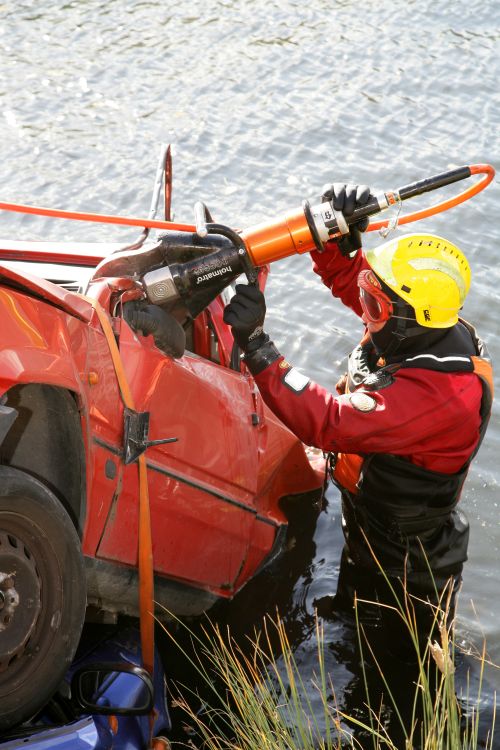Rescue from Partially Submerged Vehicles
Fire fighters must strive to be prepared for every eventuality, and foresee the types of incidents where they may be called on to perform a rescue. Swift water rescue and extrication from vehicles are of course separate disciplines and each has its own dynamics. But what happens when there is an operational requirement for them to be used simultaneously, can this be achieved practically and safely?
Such incidents have the potential to catch us unaware, if we do not prepare adequately. ‘Crossover’ training (or training that involves multiple disciplines - in this case Vehicle Extrication Techniques and Swift Water Rescue) must be considered as part of your approach to operational preparedness.
Safe approach
The very nature of such incidents will mean that your standard approach to road traffic collisions will be thoroughly compromised. Access to the vehicle and casualty will be delayed until a safe system of work can be established, which includes rescuers wearing personal protective equipment (PPE) conducive to water rescue and extrication.
Identifying vehicle fuel types e.g. hybrid, and isolating the battery to neutralize the hazards posed by airbags, will be difficult. Full stability of the vehicle will be hard to achieve due to its position in the water. This compromises scene safety and the casualty’s condition.
Space creation may require hydraulic rescue equipment to be partially submerged in water. Will your tools operate safely and efficiently in such conditions? Not all are designed for this, and knowing the limitations of your tools is vital.

Photo by Jeffrey Koper
Once access has been gained, your casualty’s condition must be assessed as at any other incident using kinematics, mechanism of injury and primary and secondary surveys. But now your casualty is submerged in cold and possibly foul water. This complicates already life threating traumatic injury and increases the need for a rapid extrication.
If an incident is foreseeable, then it should be prepared for. The promotion of theoretical discussion, followed by practical application in line with local standard operating procedures (for both disciplines) and using the most appropriately designed tools for the job, will best prepare rescuers for such eventualities.
Below you can watch a 15-minute video of a training during which a victim needs to be extricated from a partially submerged vehicle without side access (access through trunk only).
As always, I welcome your comments!
Ian Dunbar